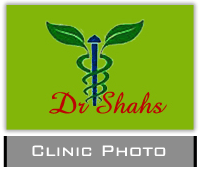WHAT IS AYURVEDA
Ayurveda is one of the most ancient sciences of life, heritage of ancient
Ayu - Life &
Veda - Knowledge/Science
Indicates that the science –Ayurveda deals with the descriptions of the “Knowledge of Life “The significant objectives of Ayurveda are to
*Maintain the positive health in healthy
*eradicate diseases in diseased.
Preferences have been given in maintenance of sound health and achievement of a long disease free life for salvation.
ORIGIN OF AYURVEDA
According to legends, the science has a divine origin, as Brahma being the creator memorized Ayurveda, passed the knowledge to his disciples and in further order the science was transmitted to the ancient pioneers of Ayurveda through sage bharadwaja. These are only legendary stories however the recorded knowledge indicates that, Ayurveda may be traced first to Rig-Veda &then to Atharva Veda and then got rationalized based on the experience of all the sages assembling at the mountains of
MAJOR CLASSICS OF AYURVEDA
Ayurveda is survived through many ancient tesxt, but TWO SETS of original authentic texts constitute a major part.
They are:
* Brihattrayi i.e. the three major classics- * Laghutrayi i.e. the three major classics-
1. Charak Samhita (600 B. C.) 1. Madhava Nidana (700 A. D.)
2. Sushruta Samhita (500B. C.) 2. Sarangadhara Samhita (1300A. D.)
3. Ashtanga Hirday(600B.C.) 3. Bhava Prakasha (1600A. D.)
THE STRENGHTH OF AYURVEDA :
Pancha Maha Bhuta Theory :
The universe, according to Ayurveda is composed of five basic elements the pancha Mahabhootas, namely Prithvi (earth),Apya (water),Teja (fire), Vayu (air) and Akasha (earth). As the human body is similarly constituted, there is a fundamental harmony between unverse and man, a healthy balance between the microcosm and the microcosm.
TRIDOSHA & SAPTA DHATU THEORY:
Ayurveda believes in the theory of tridosha i. e. Vata, Pitta & Kapha (Bodily humours) theory of Saptadatu i.e. Bodily tissues like Rasa (body fluids),Rakta (blood ),Mamsa (muscles), Medas (fat), Ashi (bones & joints ), Majja (bone marrow), Sukra (semen) and ojas(vital essence) and theory of Trimalas i.e. excretory materials like Mutra (Urine),Pureesha (faeces) and Sveda (sweat).The balanced state of all these factors is called health and when this balance is distributed it results in to a disease.
SPECIALIZED BRANCHES THE ASTANGAS:
Ayurveda advocates a complete health preservative, promotive, disease preventive and curative system of medicine through its eight major clinical specialties namely (1)Kayachikitsa (Internal Medicine), (2) Shalya Tantra (Surgery), (3)Shalakya (Disease of eye, ENT & dentistry), (4) Kaumarabhritya (5) Bhutavidya (Psychiatry), (6) Agada Tantra (Toxicology), (7) Rasayana tantra (Nutrition, Rejuvenation and geriatrics), (8) Vajikarana (Science of Aphrodisiacs).
CONCEPTS OF SWASTHA VRITTA CONDUCT FOR SOUND HEALTH ).
The Ayurvedic texts describe a comprehensive schedule of health regimen for preservation of health popularly known as ‘swasthvritta’. Details about life style. Diet, exercise, sleep, sexual activity, Personal and social hygiene,ethical principles, mental exercise, spiritual activities have been exhaustively described under this heading.
It has been mentioned in this context that “person who lives voluntarily on the scientific lines of Swastha vritta never faced troubles in his life”.
PANCHAKARMA:
It is a body cleansing therapy advocated for the radical elimination of disease causing factors &promotion of positive health by rejuvenating the vital body systems.
As the name itself indicates it consist of Pancha or five main procedures. They are.
Vamana - Emesis.
Virechana - Therapeutic Purgation.
Vasti - Enemata .
Nasya - Trans Mucosal Administrations.
Rakta moksana - Blood letting procedures.
METHODS OF INVESTIGATION IN AYURVEDA
The diagnosis in Ayurvedic medicine is based on two-fold approach to diagnostics viz.
(1) Examination of the patient i.e. rogi-pariksa;
(2) examination of the disease i.e. roga –pariksa,
Rogi-pariksa is essentially concerned with ascertaining the constitution of the individual and status of health and vitality .This is achieved through ten-fold methodology (Dasavidha pariksa)compactness of (1) Prakriti (constitution), (2) Vikriti (disease susceptibility),(3) sara (quality of tissues),(4)Samhanana (compactness of the body ),(5)Pramana (anthropometry ), (6)Satmaya (adapability), (7) Vyayama sakti (mental stamina), (8) Ahara sakti (digestive power), (9) Vyayama sakti (physical strength ),(10) vaya (age and rate of aging).
The general examination is made through popular eight –fold examination (Astaidha Pariksha)comprising examination of Nadi [Pulse],Mutra [Urine],Mala [stools],Jihva [Tongue], Sabda [Voice], Sparsa [Touch / Skin], drin [Eye examination]and Akriti [Condition of the body] and also considering the state of body channels (Srotas pariksa) and Agni (status of digestive power).
MERITS OF AYURVEDA :
- Primary concentration is given towards the Preventive aspects rather than curative aspects.
- Priciples of treatment are in conformity with the nature’s laws.
- Concentrates on restoring the normal balance in between bodily humors, Panchamahabhutas and mind .
- Adopts an individualistic and holistic approach towards the sick.
- The drugs are prepared from natural sources hence, compatible to the body and minimal adverse effects.
CONCLUSIONS
The use of Ayurveda has expanded globally and gained popularity. With the tremendous expansion in the use of Ayurveda worldwide ,it has not only to continued to continued to continued to be used for primary health care in developing contries, but has also been used in countries where conventional , medicine in predominatant in the national health care system . Plant materials are used through out developed and developing countries as home remedies ,over the counter drug products, extracts for pharmaceutical industry and represent a substantial proportion of global drug market.
Despite of avability of sophisticated technology and facilities the conventional medical sector is struggling to give satisfactory answers to many of the vast number of poor and on the other hand they tend to produce a number of complications. Hence, the whole world is enthusiastically looking towards better sources. Here Ayurveda, which has immense store of knowledge and potent drugs. can solve numerous problems of modernization. Adoption of Ayurvedic regimens has a definite role in maintaining the positive health.

1 comment:
If you are living in india and you have habit of alcohol, afim, ganja, charas, smack among other and want treatment so contact with our foundation for more detail visit here website.call 9811303800
Rehabilitation Centre in Delhi
Post a Comment